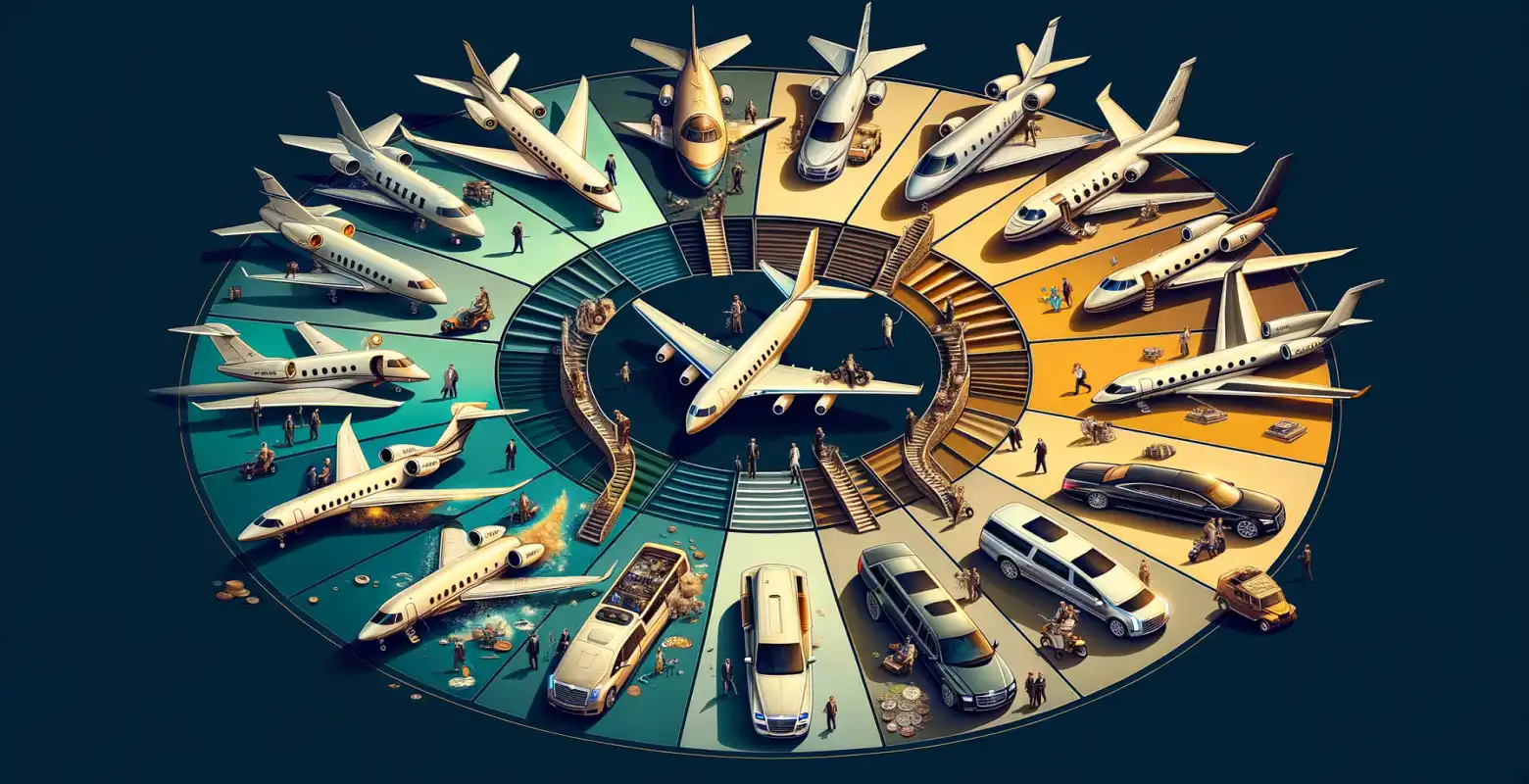History of the most expensive private jets
Introduction
In today's world of luxury and prestige, private jets have become a symbol of status and success. For the wealthiest people in the world, owning a private aircraft is not only a convenience but also a manifestation of their power and influence. The history of the most expensive private jets is full of exclusive models that not only impress with their appearance but also awe with the advanced technology and comfort they offer. In this article, we will explore the history of these luxury machines, examine the factors influencing their prices, and look at the latest trends in this exclusive industry.
History and Development of Private Jets
The beginnings of private aviation date back to the 1950s when wealthy entrepreneurs began to see the potential in owning their own aircraft. Early models, such as the Lockheed JetStar and Learjet 23, were the first jets designed specifically for the private market. However, the real breakthrough came in the 1970s and 80s when more technologically advanced models, such as the Gulfstream GII, appeared on the market.
As aviation technology advanced, the demand for larger and more luxurious aircraft also grew. Private jets began to resemble flying palaces, equipped with conference rooms, luxurious bedrooms, and spacious bathrooms. Contemporary models, such as the Boeing Business Jet (BBJ) and Airbus ACJ, offer not only comfort but also advanced navigation and communication systems.
The Most Expensive Private Jets in the World
Among the most expensive private jets in the world are models with prices reaching hundreds of millions of dollars. Here are a few of them:
1. Airbus A380 Flying Palace - The value of this aircraft is estimated at around $500 million. The jet belongs to Saudi Prince Alwaleed bin Talal and has been transformed into a mobile palace with turquoise interiors and golden details.
2. Boeing 747-8 VIP - This model, also owned by a Saudi monarch, is worth around $367 million. Onboard, there is a bedroom, office, conference room, and a dining area that can accommodate dozens of guests.
3. Airbus A340-300 - Belonging to Russian billionaire Alisher Usmanov, this aircraft is worth around $350 million. This model is known for its spacious interiors and advanced security systems.
Factors Influencing the Price of Private Jets
The price of a private jet depends on many factors. One of them is the size and range of the aircraft. Larger models capable of covering longer distances without refueling are usually more expensive. Another element is the interior equipment; the more luxurious and personalized it is, the higher the price.
Technology also plays a crucial role. Modern navigation, communication, and security systems significantly increase the value of the aircraft. Additionally, customization involving unique decorations, furniture, and finishes made from exotic materials contributes to cost escalation.
Challenges and the Future of the Private Jet Market
Private aviation faces many challenges, including rising fuel costs, environmental regulations, and changing customer preferences. Despite these obstacles, the market continues to grow, and manufacturers are investing in research and development to create more environmentally friendly and efficient machines.
In the future, we can expect a greater number of jets powered by alternative energy sources, which will contribute to the reduction of harmful emissions. Furthermore, the development of autonomous technology and artificial intelligence may revolutionize the way we travel by private aircraft.
Summary
The history of the most expensive private jets is a story of luxury, innovation, and constant evolution. From modest beginnings in the 1950s to contemporary flying palaces, private aviation has come a long way. Despite challenges, this industry continues to evolve, adapting to the needs of the wealthiest clients and introducing new technologies that shape the future of aviation. For those interested in this topic, it is worth following the market's development and considering its impact on the future of travel and transportation.






Number of comments: 0